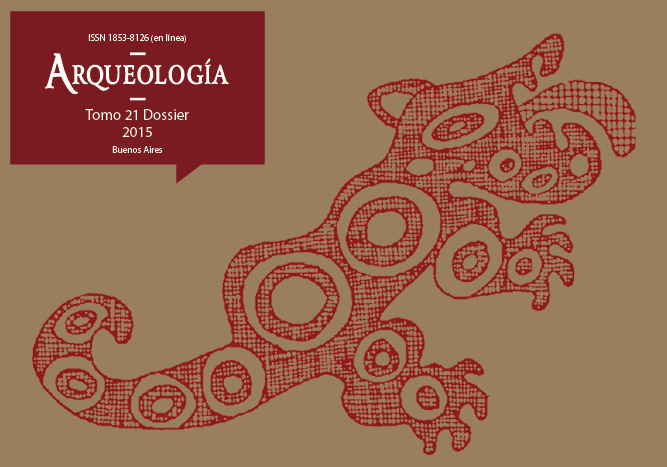Late Prehispanic landscapes in San Juan Mayo (Argentine-Bolivian border)
Keywords:
Río Grande de San Juan, Landscape archaeology, Archaeology of Northwest Argentina, Regional Developments Period
Abstract
We discuss the changes that took place in the landscape of a portion of the Río Grande de San Juan basin (sub-region San Juan Mayo, Jujuy Province, Argentina-Department of Potosi, Bolivia) during the late pre-Hispanic period. The discussion is based on the analysis of more than one hundred sites recorded through systematic survey in different environmental strata, on excavations conducted in six residential sites, and on the preliminary results of the study of the assemblages recovered. We propose a shift from a landscape centered on the reproduction of loosely integrated domestic groups (houses surrounded by gardens and grazing areas), to one formed by supra-domestic territories, with functionally differentiated places (residential conglomerates, farming areas, chambers in rock shelters, etc.), separated from each other but integrated by economic strategies designed to take advantage of vast areas through a labor force organized at a community scale. This part of the valley seems to have been abandoned during the Inka Period, to be gradually repopulated during Spanish-Indigenous times. On the basis of these data, hypotheses concerning the multi-ethnic character of the region are evaluated.Downloads
Download data is not yet available.
How to Cite
Nielsen, A., Angiorama, C., Maryañski, J., Ávila, F., & López, M. L. (1). Late Prehispanic landscapes in San Juan Mayo (Argentine-Bolivian border). Arqueología, 21(3), 33-65. https://doi.org/10.34096/arqueologia.t21.n0.2376
Section
Articles
Authors who publish in this journal agree to the following conditions:
- Authors retain copyright and yield to the journal right of first publication with the work registered with attribution license Creative Commons, which allows third parties to use the published always mentioning the authorship of the work and first publication in this magazine.
- Authors can make other independent and additional contractual arrangements for the non-exclusive distribution of the version of the article published in this issue (p. Eg., Inclusion in an institutional repository or publish it in a book), provided that clearly indicate that the work was published for the first time in this magazine.
- It allows and encourages the author / s to publish their work online (eg institutional or personal pages) before and during the process of revision and publication, as it can lead to productive exchanges and greater and more rapid dissemination of work published (See The Effect of Open Access).





(1)13.png)






1.jpg)
1.jpg)


13.png)
1.png)


(1)1.png)









